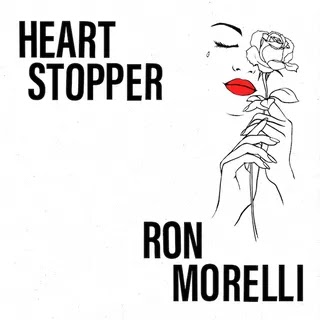DeForrest Brown Jr.’s most ambitious release yet is a 49-minute suite that brings together fractured, shuddering drum programming with spoken-word poetry, collage, and noise.
When DeForrest Brown Jr. says, “Make techno Black again,” it is meant both as a reminder of a historical fact—dance music is Black music—and a rejection of a widespread misconception. To many around the world, techno is the stuff of legend and fodder for memes: a lifestyle accessory reducible to a four-on-the-floor beat, a gram of MDMA, and a bottle of Club Mate. Brown Jr., who also records as Speaker Music, has made it his mission to expose this whitewashed caricature of techno as a lie.
In panels, lectures, and his forthcoming book Assembling a Black Counter Culture, Brown Jr., illustrates the ways that techno, invented in Detroit in the mid-1980s, represents the lived experience of Black people under specific historical circumstances. A kind of sonic archaeologist, Brown Jr. strips away techno’s layers to unearth the artifacts of urban planning, labor relations, race riots, the Great Migration, and Jim Crow before that. Digging far enough down, he finds the centuries-old songs of enslaved people who picked cotton on Southern plantations—a “communal rhythm” that would be replicated on the Ford Motor Company assembly lines manned by their descendants, a rhythm that would fuel Detroit’s two greatest cultural exports, Motown and techno. “It’s all this one sound of trauma and bodily agitation that comes out in various forms,” Brown Jr. told Pitchfork contributor Joshua Minsoo Kim in his newsletter Tone Glow. “When I think about Black music and being here from 1619 to the present, I see a long line of traumatic screams.”
Brown Jr.’s musical output stays true to this expressive legacy while expanding what “techno” might mean sonically. Since December, he has put out two albums of long-form experimental electronic music and an EP, Percussive Therapy, of psychedelic beat music. Black Nationalist Sonic Weaponry is his most ambitious release yet: a 49-minute suite that brings together fractured, shuddering drum programming with spoken-word poetry, collage, and noise. It does not much outwardly resemble the sleek pulses and iridescent chords of the classic Detroit techno he often invokes; it’s angrier, more turbulent, as committed to formlessness as symmetry. In a PDF booklet that accompanies the digital release, he invokes the poet Amiri Baraka’s Fire Music movement, which linked grassroots community organizing with the radical jazz of musicians like Archie Shepp and Albert Ayler; more than any particular musical lexicon, what Black Nationalist Sonic Weaponry draws from those artists is the desire to push beyond established forms.
The backbone of the album is a machine rhythm that runs almost without pause from start to finish: a thrashing groove that pairs booming kicks and toms with jagged hi-hats. Bass and treble trade off like the flash-bang symphony of a thunderstorm. The beat is repetitive but unpredictable; it feels deliberately agitated. Over this buckling frame he drapes a succession of sounds and ideas. In “Techno Is a Liberation Technology,” the New York producer AceMo’s processed trumpet bobs and weaves, contributing to the churning atmosphere. In “Black Secret Technology Is a Traumatically Manufactured and Exported Good Necessitated by 300 Years of Unaccounted for White Supremacist Savagery in the Founding of the United States,” the beat seesaws across the stereo field above icy drones. In “A Genre Study of Black Male Death and Dying,” free-jazz drums are spun through violent pitch-shifting algorithms while a police scanner chirps and sputters over the top.
Although the album plays out as a single, unbroken piece, the most powerful track is the first, “Amerikkka’s Bay,” in which the 18-year-old writer Maia Sanaa recites a chilling poem about Black victims murdered by police: “No more dinner nights and movies with her daddy, kisses from her mommy, dreams of who she would be. He might remember the doll that laid next to her, how it too had 6 bullets lodged into it.” Her reading snaps Brown Jr.’s unstable beats into focus and provides essential context for what will follow. Sanaa’s piece also appears in the accompanying PDF booklet, alongside a collection of poetry and essays that ground Black Nationalist Sonic Weaponry in the current moment. An essay by Brown Jr. links the COVID-19 pandemic, with its disproportionate effects on communities of color, to broader systemic inequalities and the failure of “White American utopianism,” a failure previously laid bare in the ruins of post-industrial Detroit. Critic Ryan Clarke captures the unrest of 2020 even more succinctly: “Riots are the voice of the unheard and percussion is the frequency.”
Black Nationalist Sonic Weaponry is not an easy listen. The disjointed repetition—a beat that stops and starts, starts and stops, over and over—is jarring. The rhythm jitters in place, yet it doesn’t vary across the album; it just drops out for short passages before kicking in again. (It is remarkably similar to the rhythms deployed on Percussive Therapy.) But surely that irregular repetition is part of the point. The beat’s insistently disorienting qualities short-circuit the music’s entertainment value; a track like “African American Disillusionment With Northern Democracy Continues to Smolder in Every Negro Who Has Settled Up North After Knowing Life in the South,” with its nightly news anchors discussing white agitators at Black-led protests, is unlikely to soundtrack a Friday-night dance party. The goal is to provoke, to disturb.
With its long, unbroken stretch of repetitive-yet-not-repeating beats, over which jazz samples, news segments, and police scanners are painted like scenes, Black Nationalist Sonic Weaponry plays with linear time in unsettling ways. It often feels less like music than like some other medium—like, say, doomscrolling the timeline, or following a horizontal mural that unrolls new scenes of horror and resilience without end. In the liner notes to 1965’s The New Wave in Jazz, a compilation featuring Albert Ayler, Archie Shepp, and John Coltrane that was recorded a month after Malcom X’s assassination, Amiri Baraka wrote that the album was “heavy evidence that something is really happening.” Black Nationalist Sonic Weaponry is a similar form of evidence: Its scroll-like shape is a seismograph of these turbulent, hopeful times.
View the original article here



%20Music%20Album%20Reviews.webp)












0 comments:
Post a Comment